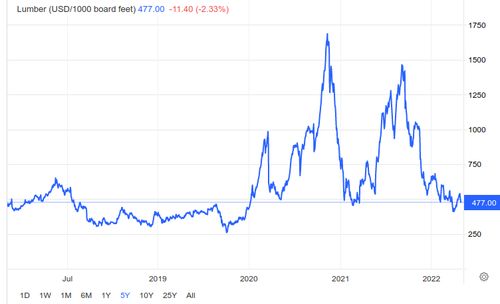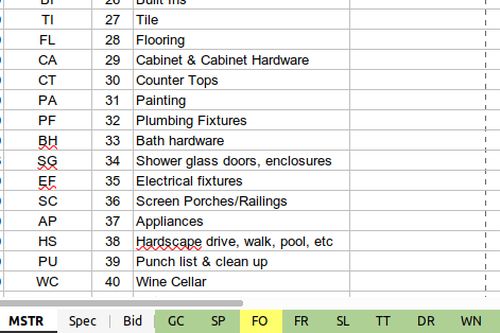26 Dec November 2022: How Does Willis Sinclair Price Homes

Number 105, November 2022

Panning for gold in June 2022!
Have you ever panned for gold? This summer on our trip with a couple of our granddaughters, we stopped by South Pass City, Wyoming (population: “about 6” according to the sign at the edge of “town”). It is an old mining town high in a Rocky Mountain pass near the Continental Divide. There is a state park there (South Pass City State Historic Site) where you can actually pan for gold. The girls, Alice (L) and Hannah (R) did not find any gold this time, but in 2018, one of our grandsons did get some flakes of gold in this same creek.
I had originally planned to write about troubleshooting this month, but decided to address the issue of pricing a home.

From the Desk of Bill
Several years ago, I “retired” from managing jobs for our company. Now, I am continuing to write this newsletter and also help with pricing new home projects. Pricing a new home is a non-trivial task for a number of reasons. This newsletter will cover some of the challenges.
One challenge we deal with is lumber prices are fluctuating a lot during this time of high inflation and high demand. In the last five years, 1,000 board feet (a common measure for pricing lumber) has varied from $253 per 1,000 board feet to almost $1,700 per 1,000 board feet – more than a 700% change. Right now, the price is about $500 per 1,000 board feet. The price can vary dramatically from the time you have it quoted until the time it is purchased. Some lumber yards are holding their price for only 24 hours, not the normal 30 days.

Lumber prices have been very volatile. This chart shows the average price for 1,000 board feet of lumber – a standard amount for pricing — for the last 5 years.
Unfortunately, lumber is not the only item fluctuating although it is probably the worst. All materials are up and typically up more than the “inflation rate.” This fluctuation has made it difficult (near impossible) to predict the future prices and keep projects on budget.
Sometimes prices can vary wildly even without inflation. A refrigerator may cost $1,500 or $10,000 depending on the homeowner’s choice. Cabinets can vary widely in price depending on the ones selected. For items like this we guess a reasonable amount and spell it out.Labor is also a serious challenge. Right now, there is a lot of construction work and few workers. Sub contractors are having to raise their rates to be able to keep and/or hire workers. Typically, there is not a lot of company loyalty in the construction trades so if someone offers a bit more money, workers will often move to a different company causing even more shortages.
Sometimes workers will change professions altogether if they cannot earn enough money in construction trades. Few people work in construction for the money or their health. Usually, people work in construction because the skills they possess don’t qualify them for a better job.
Another challenge we face is rising overhead expenses. At Willis Sinclair Homes, we do our best to hold the line on our prices by keeping our overhead low. We don’t have a fancy office building or or large office staff. Our pay scale for employees is modest. We don’t buy new company vehicles, but rather utilize nice older vehicles instead. Our trucks look good because we take care of them, but they are all over 10 years old. We do everything we can do to keep our costs low so we can keep our prices low.
With so many unknowns and challenges are our estimates accurate? Yes and no (an answer you might expect from a politician). At the time we do the pricing, our estimate is reasonable accurate (so, “yes”). When we actually start building the home, prices will probably have changed, so the estimate is not accurate (so, “no”). Typical home construction usually takes over a year, maybe two depending on the size and complexity. That is plenty of time for prices to rise considerably.
In the past prices didn’t fluctuate very much. it was not uncommon for prices for some items to go up as prices on other items went down. In the end the overall cost changes would often balance or be close. Today, that is simply not the case. Booming construction and record high inflation are driving the cost of everything up.
Even if we could purchase everything up front, labor rates would not remain constant so once again, the cost would change. It would also be very expensive trying to store all of the materials used to build a home until they was needed. Unfortunately, as with anything custom and complex like a home, predicting the final price is not possible unless you can tell the future. I cannot.
Sometimes a phenomenon arises which I used to see when I was doing electronic design work. Marketing guys would like to keep adding just “one more” feature to our radar or television designs. Pretty soon the price was higher than the marketing guys wanted. We engineers called this “add this and add that” activity “Creeping Elegance.” Home owners have to be careful or creeping elegance will run their home price higher than they want.
Still we do our best to give accurate estimates. We do not like having to tell our customers that the price has increased since we estimated their project. In the end we want customers to be happy with their new home and able to give us an unreserved recommendation.
Pricing a Home
There are a number of ways to price a new home. The fast way is to glance at the plans and determine the square footage of the home. Then pull a number out of the air, say $450 per square foot and multiply. Instantly, you have a number. Fast, but inaccurate. However, doing a much more detailed pricing like we do, unfortunately, does not guarantee accuracy either.
The best way we know to price a house is to break the job down into about 40 different categories such as framing, windows, interior trim, insulation and so forth and then price each category separately. In some cases, a sub can quote the actual price of his category (with the understanding prices change for subs just like us). Painters, for example, quote the price to paint the house inside and outside. They provide all materials (primer, paint, sandpaper, wood putty, et cetera). The HVAC quote is for all material and labor as well.
Although we get firm prices from some of the turnkey subs, they are usually guaranteed for 30 days. If their work does not begin for several months, the “firm” price is no longer firm.
As soon we get a new set of plans, we distribute them (usually electronically) to subs we know and like to use. By getting the plans out to a number of subs, they can all work in parallel to make the home pricing exercise as quick as possible.
To keep track of everything, we set up a spread sheet with 40 or 45 separate sheets (tabs).
This is part of a spreadsheet we use to calculate house prices. The letters at the bottom are tabs (sheets) where calculations are made for each category. The totals for each category are automatically copied to the master (MSTR) sheet and summed. I color code the tabs so I know when I am waiting for a sub to bid or don’t have information I need. Not all homes need all tabs, obviously.
Some of the categories are similar. GC stands for General Conditions. This sheet includes entries such as the Porta-Let, Dumpster, Job Sign, Permits & Plans and so forth. A number of these items are a function of time (like the Porta-let and Dumpster), but the monthly cost is the same.
SP (Site Prep) includes things such as the well, septic/sewer, temporary fencing, surveying, dewatering (if necessary because of water saturated ground) and fill dirt (if necessary).
Some items are a lot more time consuming to calculate. For example how many 2x6s are needed? How many sheets of plywood sub flooring? Wall sheathing? Roof sheathing? It takes a while to figure out what is needed and then get it priced. To further complicate matters every house we build is custom. That means details are different on every home and we basically start at ground zero with each project.
The Spec tab is where we take off specifications such as room sizes, wall, ceiling and flooring materials for each room. This information helps calculate flooring area, wall areas, amount of baseboard, crown trim and so forth. Often the plans don’t spell out the finishes (paint or stain) (or they have not been decided) so we have to make reasonable assumptions.
The Bid tab is where we track subs we asked to bid on the project so we can send follow up emails or calls if we don’t hear in a timely manner. Unfortunately, during the current construction boom, our subs are very busy and often don’t get bids to us in a timely manner. Typically, we like to use the same subs because we establish a good relationship with them and can usually get them to perform better than ones we don’t know.
On the Bid tab, we also look at past homes we have built and figure a number of categories in terms of dollars per square foot. We then multiply by the area, not to get a price, but to check and make sure our price is reasonable. Sometimes if a sub does not get us a price in time, we are forced to use historical pricing to estimate costs. We understand this is risky in today’s market, but it is better than a wild guess.
Does pricing a home like we do take a lot of time? Yes, it does, but we think the detail is worth the effort. It gives us the opportunity to catch and price certain unique details that previous houses might not have had. Even so we still will miss things, even with our detailed estimate. All we can do is our best to price things at the onset and then be alert during construction to keep prices as close to budget as possible.
I wish we could more accurately predict the prices in the future, but my predictor is not working too well right now. Until this period of record high inflation is over and the building boom cools a bit, all we can do is our best with our estimating and diligent during construction to keep our costs as low as possible.
If you have any questions or comments, don’t hesitate to call or text (843 846 2500) or email (info@willissinclair.com). We would be happy to speak with you. No cost or obligation on your part.





No Comments